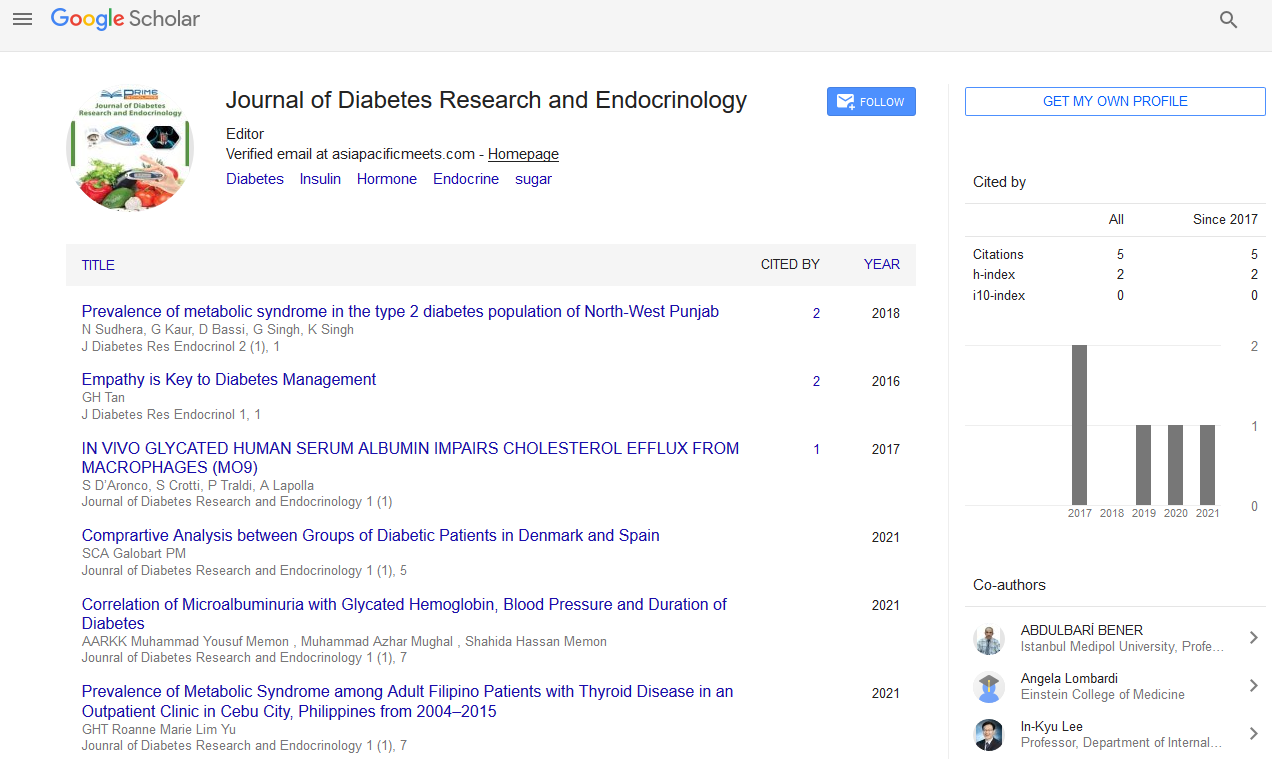Commentary - (2023) Volume 7, Issue 1
Diabetes in the United States who takes Insulin or Diabetes Medications that help the Pancreas Release Insulin into the Blood
Amy Peacock*
Department of Public Health, Sapienza University of Rome, Italy
*Correspondence:
Amy Peacock,
Department of Public Health, Sapienza University of Rome,
Italy,
Email:
Received: 02-Jan-2023, Manuscript No. IPJDRE-23-16124;
Editor assigned: 04-Jan-2023, Pre QC No. IPJDRE-23-16124 (PQ);
Reviewed: 18-Jan-2023, QC No. IPJDRE-23-16124;
Revised: 23-Jan-2023, Manuscript No. IPJDRE-23-16124 (R);
Published:
30-Jan-2023, DOI: 10.36648/ipjdre.7.1.04
Description
When your blood sugar (glucose) level is lower than the normal
range, you have hypoglycemia. Your body gets most of its energy
from glucose. Diabetes treatment frequently has an impact
on hypoglycemia. Be that as it may, different medications and
an assortment of condition numerous uncommon can cause
low glucose in individuals who don’t have diabetes. Treatment
for hypoglycemia is needed right away. However, your numbers
may differ. Make sure to ask your doctor. Taking a high-sugar
food or drink or medication to quickly bring your blood sugar
back within the normal range is part of the treatment. Finding
and treating the underlying cause of hypoglycemia is necessary
for long-term treatment. People with type 1 diabetes and
people with type 2 diabetes who take insulin or other diabetes
medications frequently have low blood glucose levels. 4 in 5
people with type 1 diabetes and nearly half of those with type
2 diabetes reported experiencing a low blood sugar event at
least once over a 4-week period in a large global study of people
with diabetes who take insulin. It is less common to have
severely low blood glucose, which is when your blood glucose
level drops so low that you are unable to treat it on your own.
2 out of every 100 adults with diabetes in the United States
who take insulin or diabetes medications that help the pancreas
release insulin into the blood may experience severe low
blood glucose levels annually. When your blood sugar (glucose)
level falls below what is healthy for you, you have hypoglycemia.
Low blood glucose or low blood sugar are other
names for it. People with diabetes, particularly Type 1 diabetes,
frequently experience hypoglycemia. Low blood glucose is
the point at which your blood glucose levels have fallen low
enough that you really want to make a move to take them back to your objective reach. This typically occurs when your blood
glucose level is below 70 mg/dL; however, you should discuss
your own blood glucose targets with your diabetes care team
and what level is too low for you. An insulin reaction or insulin
shock may also be used to describe low blood glucose. The
“fight-or-flight” hormone epinephrine is released when blood
glucose levels drop. The effects of hypoglycemia, such as a racing
heart, sweating, tingling, and anxiety, can be brought on by
epinephrine. The brain ceases to function normally if the level
of glucose in the blood continues to decrease. This can result
in slurred speech, numbness, drowsiness, difficulty concentrating,
confused thinking, and blurred vision. The brain may
experience seizures, a coma, or even death if blood glucose levels
remain low for an extended period of time, depriving it of
glucose. When blood glucose levels are too low, the pancreas
produces glucagon, a hormone that causes your liver to release
stored glucose into your bloodstream. When a person with diabetes
has blood glucose levels that are too low to be treated
using the 15-15 rule, glucagon is used to treat them. Glucagon
is a prescription drug that can be injected, given or puffed into
the nose. For those who are already familiar with injectable
glucagon, there are currently two types of injectable glucagon
products on the market: One that is pre-mixed and ready to use
and one that comes in a kit.
Acknowledgement
None
Conflict of Interest
The authors declare that they have no conflict of interest.
Citation: Peacock A (2023) Diabetes in the United States who takes Insulin or Diabetes Medications that help the Pancreas Release
Insulin into the Blood. J Diab Res Endocrinol. 7:04.
Copyright: © 2023 Peacock A. This is an open-access article distributed under the terms of the Creative Commons Attribution
License, which permits unrestricted use, distribution, and reproduction in any medium, provided the original author and source
are credited.

